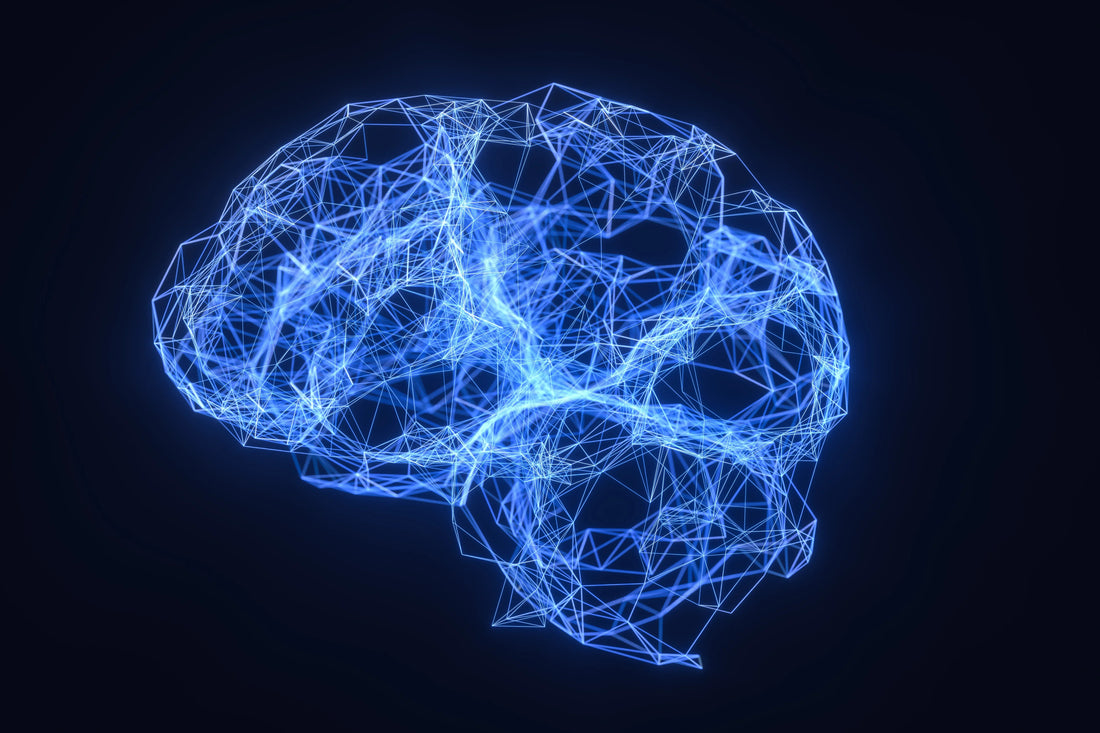
Brain waves and how they impact wellness
Share
Our brains are constantly buzzing with activity—literally. This activity is often measured in the form of brain waves, which are patterns of electrical impulses generated by neurons. These waves are categorized by frequency, and each type is associated with different mental states, from deep sleep to heightened creativity. Understanding brain waves can help us tune into how we think, feel, and function on a deeper level.
Let’s take a look at the five main types of brain wave patterns and what they mean:
1. Delta Waves (0.5 – 4 Hz) – The Deep Sleep Zone
Delta waves are the slowest and most deeply penetrating brainwaves. They occur during deep, dreamless sleep and are crucial for healing and regeneration. This is when the body repairs itself and the immune system strengthens. High levels of delta waves are also associated with deep meditation and unconscious bodily functions.
When you're in Delta:
Deep, restorative sleep
Healing and regeneration
Unconscious or very relaxed state
2. Theta Waves (4 – 8 Hz) – The Gateway to Creativity
Theta waves often appear during light sleep, drowsiness, or deep meditation. They’re linked to intuition, creativity, and the subconscious mind. Many artists, musicians, and problem-solvers tap into theta waves to access "aha!" moments and creative flow.
When you're in Theta:
Deep relaxation
Vivid imagery and daydreaming
Emotional processing and memory recall
3. Alpha Waves (8 – 12 Hz) – The Calm Focus
Alpha waves are present during states of relaxation and calm alertness—like when you're meditating, walking in nature, or just daydreaming. They help bridge the conscious and subconscious mind and are ideal for learning and absorbing information.
When you're in Alpha:
Calm and centered
Relaxed yet alert
Good for focus and integration
4. Beta Waves (12 – 30 Hz) – The Active Mind
Beta waves are associated with active thinking, problem-solving, and decision-making. They dominate our normal waking state when we're engaged in tasks, conversations, or logical thinking. While necessary for productivity, too much beta activity can lead to stress and anxiety.
When you're in Beta:
Focused on the outside world
Actively thinking and analyzing
Alert, but possibly stressed
5. Gamma Waves (30 – 100 Hz) – The Peak State
Gamma waves are the fastest brainwaves and are linked to peak cognitive functioning, high-level information processing, and states of spiritual insight. Some studies have shown that long-term meditators (like Tibetan monks) have high gamma wave activity, especially during compassion-based meditation.
When you're in Gamma:
Heightened perception and consciousness
Enhanced memory and learning
Deep compassion and insight
In a Nutshell: Your brain is like a radio that can tune into different frequencies, each with its own purpose. By becoming more aware of these brain waves, you can learn to shift your mental state more intentionally and live with more clarity, creativity, and calm.
The Modern Mind: Starved of Relaxation
In today’s fast-paced world, many of us are spending too much time in high-frequency beta brain waves—constantly thinking, planning, problem-solving, and reacting. While beta waves are essential for functioning in daily life, being stuck in this state for too long without breaks can be seriously draining.
We’re often not getting enough access to the more relaxed brain wave states like alpha, theta, and delta, and that imbalance can take a real toll.
What Happens When You Don’t Relax Your Brain?
Here’s what chronic over-activation of the mind and under-activation of relaxed brain states can do:
🧠 Mental Fatigue & Burnout
Without enough alpha and theta activity, the brain doesn’t get the mental “breathers” it needs. You may feel foggy, uninspired, or like you’re constantly on edge. Creativity drops, and decision-making suffers.
😰 Increased Stress & Anxiety
Prolonged beta dominance keeps your nervous system in a constant state of alert—think “fight or flight.” This ramps up cortisol and stress hormones, which can lead to chronic anxiety, restlessness, and even panic.
😴 Poor Sleep Quality
Delta and theta waves are essential for deep and restful sleep. If your brain never slows down, falling asleep becomes harder, and the quality of your rest suffers. Over time, this can lead to insomnia, fatigue, and hormonal imbalances.
❤️ Physical Health Decline
Chronic stress and lack of deep relaxation can:
Weaken the immune system
Elevate blood pressure
Trigger inflammation
Disrupt digestion
Contribute to heart disease and other chronic conditions
😓 Emotional Instability
Lack of alpha and theta states makes it harder to process emotions, connect with intuition, or simply feel calm. You might become more reactive, impatient, or emotionally overwhelmed.
Signs You Might Be Stuck in High Gear
You struggle to “turn your brain off”
You feel anxious or overwhelmed often
You have trouble sleeping or staying asleep
You feel disconnected from your creativity or intuition
You get sick more often or feel physically run down
How to Bring Back the Balance
The good news? You can train your brain to access relaxed states more often. Here are a few simple ways:
-
Meditation (especially mindfulness or breath-focused)
-
Nature walks or time outdoors
-
Listening to calming music or binaural beats
-
Breathwork and yoga
-
Journaling or free-flow writing
-
Mindful hobbies (drawing, knitting, gardening)
-
Digital detox (put that phone down! yes, even just 10–15 minutes helps!)
Final Thought
Just like your body needs rest, your brain needs it too—on a neurological level. Learning to drop into slower, more relaxed brain wave states isn’t a luxury. It’s essential for your well-being, creativity, emotional health, and longevity.
Your brain was designed to flow between states—not be stuck in overdrive. We have more tips in the video that accompanies our Stress Case Kit.




